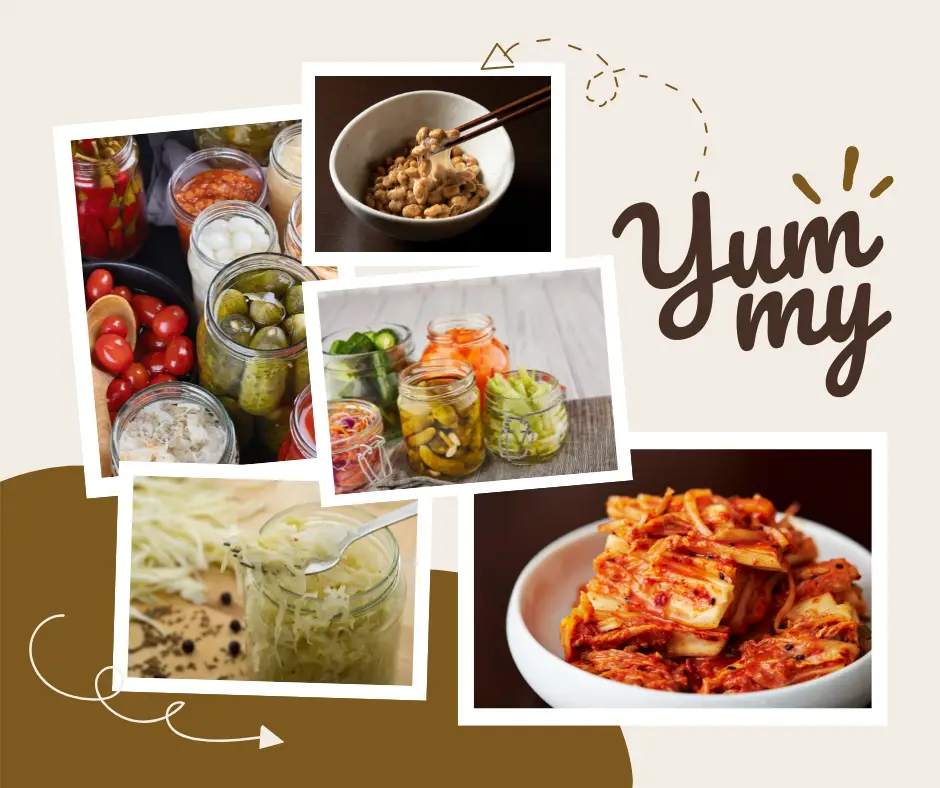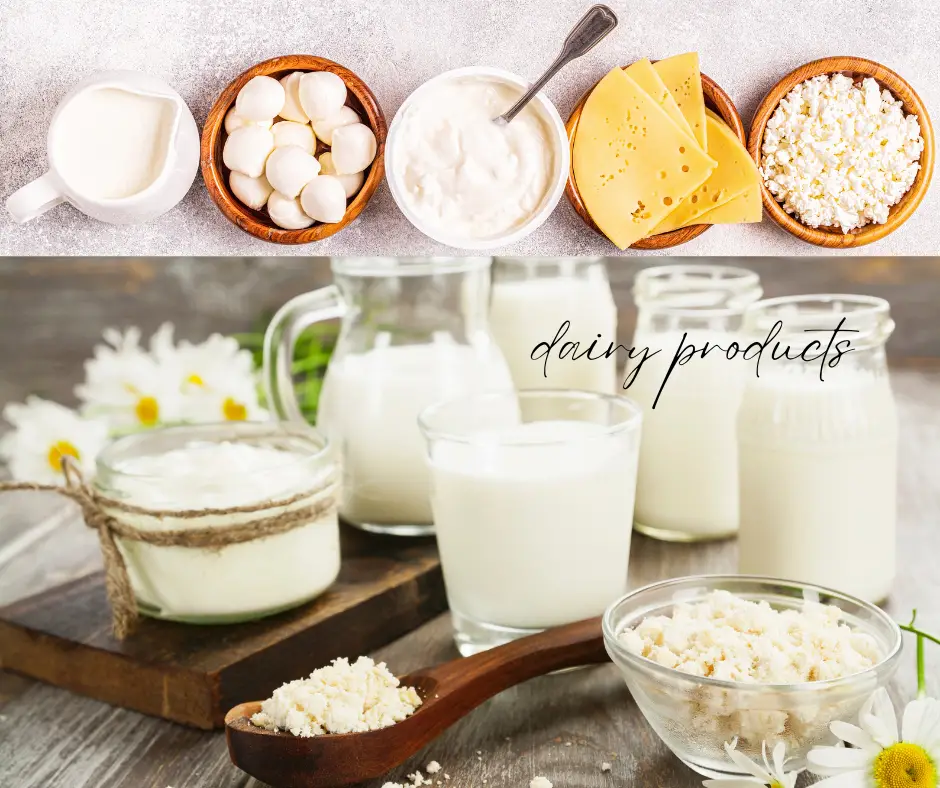Fermented foods offer several potential health benefits due to their unique fermentation process, which involves the action of beneficial bacteria, yeasts, or moulds on the food. In this first article, part one of three, we want to highlight some of the amazing fermented foods and beverages that have developed, often independently, through the world over the last few hundreds or indeed thousands of years. In the second part of this three-part series, we’ll delve into the fascinating details of some the fermented vegetable products we list here before covering fermented dairy products in part three. To start with though, here are some health benefits associated with consuming fermented foods:
- Improved Digestive Health: Fermented foods contain live beneficial bacteria, often referred to as probiotics, which can help support a healthy gut microbiome. Probiotics aid in digestion, enhance nutrient absorption, and promote a balanced intestinal environment.
- Enhanced Nutrient Absorption: Fermentation can increase the bioavailability and absorption of certain nutrients present in food. For example, fermentation of soybeans enhances the availability of nutrients like iron and calcium.
- Strengthened Immune System: The gut microbiome plays a crucial role in immune function, and consuming fermented foods can help support a healthy balance of gut bacteria. Probiotics in fermented foods may stimulate the immune system, potentially reducing the risk of certain infections and allergies.
- Increased Nutritional Value: Fermentation can enhance the nutritional profile of foods. It can increase the levels of certain vitamins, such as B vitamins, and produce beneficial compounds like antioxidants and short-chain fatty acids, which have been associated with various health benefits.
- Digestive Enzyme Production: Fermented foods often contain enzymes that aid in digestion. These enzymes can help break down complex carbohydrates, proteins, and fats, potentially easing the burden on the digestive system and promoting better digestion.
- Reduced Lactose Intolerance Symptoms: Fermentation of dairy products, such as yogurt or kefir, breaks down lactose, the sugar found in milk. This process can make fermented dairy products easier to digest for individuals with lactose intolerance.
- Potential Weight Management Support: Some research suggests that the consumption of certain fermented foods may be associated with weight management and a reduced risk of obesity. However, more studies are needed to establish a definitive link.
It’s important to note that individual responses to fermented foods may vary, and not all fermented foods provide the same health benefits. The specific strains and quantities of beneficial bacteria present in different fermented foods can differ, influencing their potential health effects. Additionally, it’s always a good idea to consult with a healthcare professional if you have specific health concerns or conditions.
Here are some common (kimchi and sauerkraut) along with unusual and different fermented vegetable and dairy products from around the world:
Vegetables
- Kimchi: A traditional Korean dish made from fermented cabbage and other vegetables, such as radishes and scallions, seasoned with chili peppers, garlic, ginger, and fish sauce.
- Sauerkraut: A fermented cabbage dish originating from Germany and Eastern Europe. It is made by finely shredding cabbage and fermenting it with lactic acid bacteria.
- Natto: A popular Japanese dish made from fermented soybeans. It has a distinctive slimy texture and strong flavor, and is often eaten with rice.
- Tsukemono: A term used to describe various types of Japanese pickled vegetables. They are usually fermented in salt, vinegar, or a combination of both, and can include vegetables like cucumbers, radishes, turnips, and eggplants.
- Achar: A type of pickle commonly found in South Asian cuisines, including India, Pakistan, and Bangladesh. Achar can be made with a variety of vegetables, such as mangoes, carrots, and green chilies, which are fermented in a mixture of spices, salt, and oil.
- Torshi: A Middle Eastern condiment made by pickling vegetables in vinegar or brine. The vegetables can include cauliflower, eggplant, carrots, and garlic, among others.
- Kimchi radish cubes: A unique Korean fermented vegetable product made from cubed radishes, typically served as a side dish.
- Pickled watermelon rind: Popular in Southern United States, pickled watermelon rind involves fermenting the rind of watermelon in a sweet and tangy brine.
- Escabeche: A traditional Spanish and Latin American dish where vegetables, such as carrots, peppers, and onions, are pickled in a vinegar-based marinade.
- Fermented bamboo shoots: A delicacy in many Asian cuisines, particularly in countries like China, Japan, and Thailand. Bamboo shoots are fermented to develop a distinct tangy flavour.

Dairy
- Skyr: A traditional Icelandic dairy product that resembles yogurt but has a thicker, creamier consistency. It is made from skim milk and is high in protein.
- Filmjölk: A fermented milk product from Sweden, similar to yogurt but with a thinner consistency. It has a slightly sour taste and is often enjoyed with fruits or muesli.
- Kefir: A fermented milk drink that originated in the Caucasus region. It is made by fermenting milk with kefir grains, which are a combination of bacteria and yeast. Kefir has a tangy taste and a slightly effervescent texture.
- Kumis: A traditional fermented dairy product from Central Asia, particularly popular in Mongolia. It is made from fermented mare’s milk and has a slightly sour and fizzy taste.
- Tarhana: A dried fermented dairy product found in various forms across the Middle East, Central Asia, and Eastern Europe. It is made from a mixture of fermented milk, wheat flour, and vegetables, and is often used to make soups.
- Dadih: A traditional Indonesian fermented buffalo milk product. It is made by coagulating the milk with a local wild grass called “elephantopus,” resulting in a custard-like texture and a tangy flavor.
- Clabber: A traditional Southern United States dairy product made by allowing raw milk to naturally ferment and sour. It has a thick consistency and is often used as a base for cooking or eaten with sweeteners.
- Suutei Tsai: A Mongolian traditional tea made with fermented milk. It is prepared by boiling green tea with milk and allowing it to ferment, resulting in a unique and tangy beverage.
- Amasi: A fermented milk product from Southern Africa, also known as maas. It is similar to yogurt but has a thicker consistency and a slightly sour taste.
- Chal: A fermented dairy product from Iran, particularly in the Gilan and Mazandaran provinces. It is made by fermenting raw cow’s milk and has a thick texture and tangy flavor.


